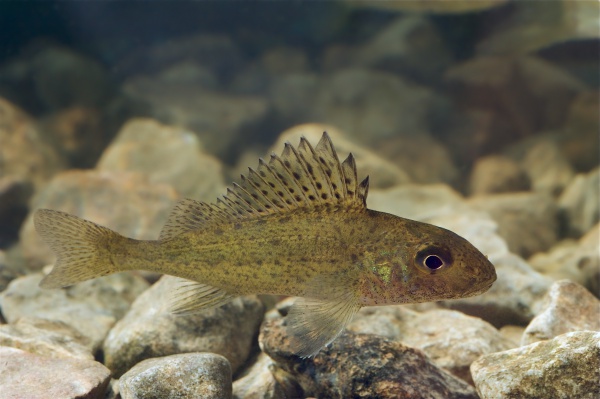Facts About Ruffe
The Eurasian ruffe, often simply referred to as ruffe or pope, is a freshwater fish native to the temperate regions of Europe and northern Asia. Unfortunately, it has infiltrated the Great Lakes in North America, where it has become a problematic invasive species. Ruffe reproduce at a rapid rate, outpacing many native fish species.
In terms of appearance, the ruffe bears some color similarities to the walleye, with an olive-brown to golden-brown back and yellowish-white undersides. One of its distinctive features is a spiny dorsal fin, and it is known for its feisty, aggressive nature. Ruffe primarily feed on zoobenthos (small organisms living on the bottom of water bodies) and are prolific breeders, with a single female capable of laying between 130,000 and 200,000 eggs each year.
In their native regions, ruffe inhabit various bodies of water, including the Caspian, Black, Aral, Baltic, and North Seas. They have also spread to parts of Western Europe and have been introduced to the Great Lakes. Their presence in the Great Lakes has led to significant ecological challenges, as they outcompete local species for food. To combat this, efforts are underway to boost populations of natural predators like walleye and northern pike. Additionally, researchers are exploring chemical and pheromone-based methods to control ruffe numbers.
The problem isn't confined to North America. In Loch Lomond, Scotland, invasive ruffe populations have been observed preying on the eggs of native whitefish, disrupting the local ecosystem. This highlights a broader issue: ruffe in non-native environments pose a serious threat to biodiversity and ecological balance. Therefore, effective management strategies are crucial to mitigate their impact and protect native species.

 Guyana
Guyana